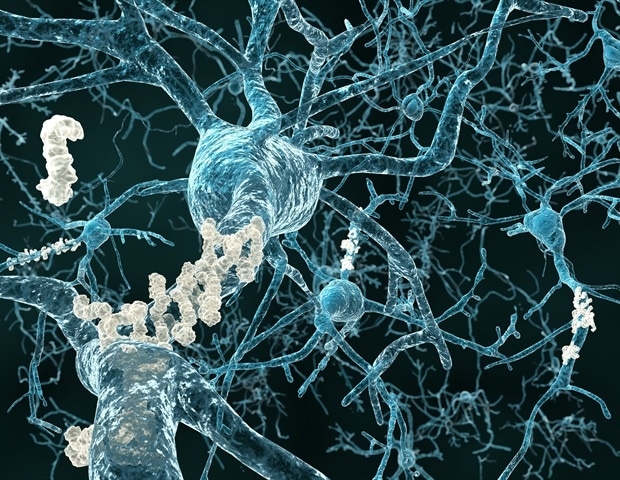Neurotransmitter ranges within the mind can point out mind well being and neurodegenerative ailments like Alzheimer’s. Nonetheless, the protecting blood-brain barrier (BBB) makes delivering fluorescent sensors that may detect these small molecules to the mind troublesome. Now, researchers in ACS Central Science exhibit a approach of packaging these sensors for simple passage throughout the BBB in mice, permitting for improved mind imaging. With additional improvement, the know-how may assist advance Alzheimer’s illness analysis and therapy.
It’s common for neurotransmitter ranges to lower with age, however low ranges of the neurotransmitter adenosine triphosphate (ATP) may be a sign of Alzheimer’s illness. To measure the situation and quantity of ATP within the mind, researchers have developed fluorescent sensors from items of DNA known as aptamers that gentle up after they bind to a goal molecule. Strategies for delivering these sensors from the bloodstream to the mind have been developed, however most comprise artificial elements that may’t simply cross the BBB. To develop sensors for stay mind imaging, Yi Lu and colleagues encapsulated an ATP aptamer sensor in brain-cell derived microscopic vesicles known as exosomes. They examined the brand new sensor supply system in lab fashions of the BBB and in mouse fashions of Alzheimer’s illness.
The BBB laboratory mannequin consisted of a layer of endothelial cells on prime of an answer containing mind cells. The researchers’ sensor-loaded exosomes have been almost 4 occasions extra environment friendly than standard sensor supply methods at passing by way of the endothelial barrier and releasing the fluorescent sensor into the mind cells. This was confirmed by measuring the noticed degree of ATP-binding-induced fluorescence. Subsequent, Lu’s staff injected mouse fashions of Alzheimer’s illness with both the sensor-loaded exosomes or free-floating unloaded sensors. By measuring fluorescence alerts within the mice, the researchers discovered that the free-floating sensors stayed primarily within the blood, liver, kidneys and lungs, whereas sensors delivered by way of exosomes collected within the mind.
In mouse fashions of Alzheimer’s illness, the exosome-delivered sensors recognized the situation and focus of ATP in numerous areas of the mind. Particularly, they noticed low ranges of ATP within the hippocampus, cortex and subiculum areas of the mind, that are indicative of the illness. The researchers say that their exosome-loaded ATP-reactive sensors present promise for non-invasive stay mind imaging and might be developed additional to create sensors for a spread of clinically related neurotransmitters.
Supply:
Journal reference:
Banik, M., et al. (2024) Delivering DNA Aptamers Throughout the Blood–Mind Barrier Reveals Heterogeneous Decreased ATP in Totally different Mind Areas of Alzheimer’s Illness Mouse Fashions. ACS Central Science. doi.org/10.1021/acscentsci.4c00563.


